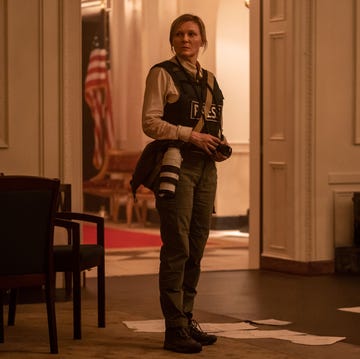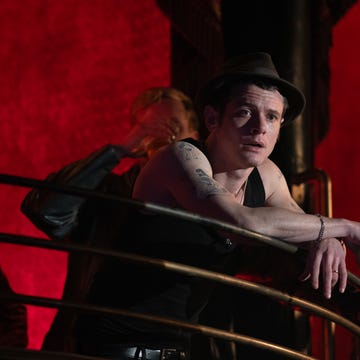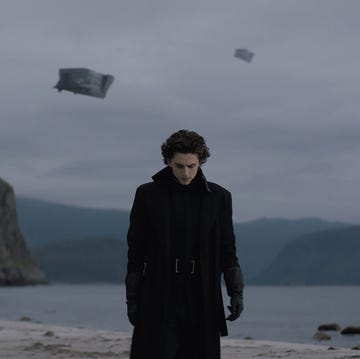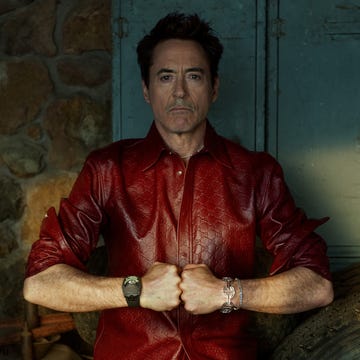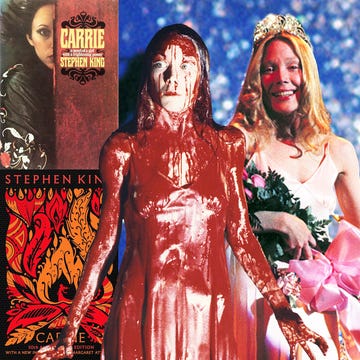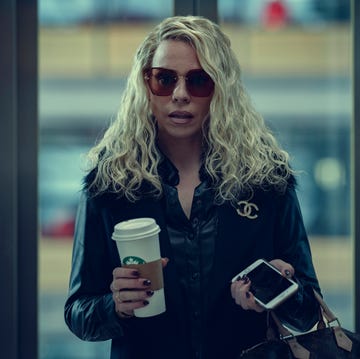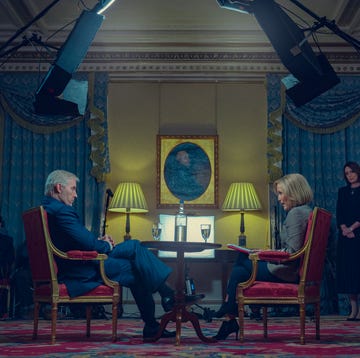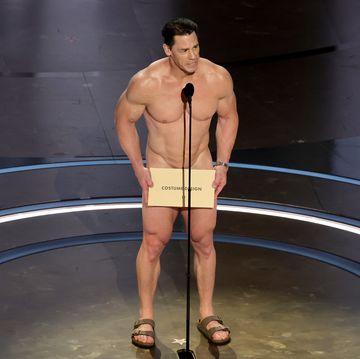Network's Peter Finch and The Dark Knight's Heath Ledger famously won posthumous Oscars for emotionally riveting performances. Now, after a key digitally aided performance in Rogue One, we're on the doorstep of an era when major awards could go to actors who died long before their scenes were even conceived, let alone shot.
That is because the face of Peter Cushing, the imposing British actor who died in 1994, lends an especially memorable presence to Rogue One by helping to "reprise" his Star Wars character, Grand Moff Tarkin, the Imperial governor who practically rules by force of glare, intonation, and cheekbone.
In the Star Wars timeline, Rogue One is an immediate prequel to the original 1977 film (Star Wars Episode IV: A New Hope) , so there is requisite connective tissue visually as well as narratively, right down to the appearances of some of the franchise's most iconic characters. And though George Lucas may not have fully foresaw this aspect four decades ago, one benefit of populating your universe with so many masks, droids and creature makeup is the ease with which their countenances can be recreated for any future iterations. In terms of accessibility, their looks are immortal.
But how to summon whole new performances from human faces that can ring true?
Under director Gareth Edwards, Rogue One represents another marker in the decades-long quest for the best CGI-fashioned human replicas. The filmmakers auditioned actors to "play" Cushing's Tarkin, settling on BBC soap actor Guy Henry. This Tarkin is thus free of the dreaded "dead eye" effect. Lo, though the effects wizards walk through the "uncanny valley," Tarkin registers as quite alive—even if his facial proportions sometimes read as ever so slightly off from the Original Trilogy. We are nearing the reality of a fully fleshed-out, CGI-enhanced performance long after an actor has passed.
If Rogue One wins an Oscar for effects, Cushing should be in no small part why.
This all feels like an organic continuation of what some of the sharpest minds at Lucasfilm/ILM/Disney-Pixar et al. (including effects veteran John Knoll) have been pushing toward since at least the dawn of the 80s, as the digital milestones began to come fast and furious. The power to manipulate the pixel forever beckons the imagination now, and 2016 has put the state of that long, Jedi-like journey on distinct display.
After all, Disney even gave us a scene this year in which Robert Downey Jr., looking like his 80s-era self, registers as mostly real in Captain America: Civil War, even if the CGI tweaks of a motion-capture performance can still be distracting when involving a too-human countenance.
And yet even among the Disney/Lucasfilm wizards, CGI that makes an actor appear younger can still prove an elusive feat, even in this age of full computer body scans of actors that can be banked with all the forward-thinking hopes and dreams of frozen immortality, forever accessible, like some digitally cryogenic Walt Disney.
Because at the other end of the CGI spectrum in Rogue One, the film offers a glimpse of another iconic Original Trilogy character—yet the facial effect feels distractingly artificial and nearly alien, like a plastered death mask robbed of authentic actorly effect, well beyond the usual artifice of Botox.
The force of CGI magic giveth, and then the same force taketh away.
From: SFGate







